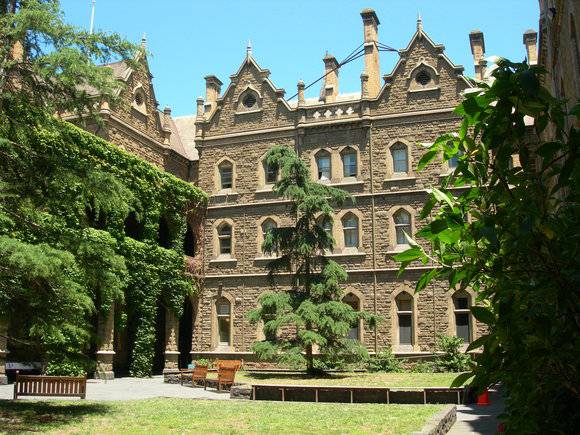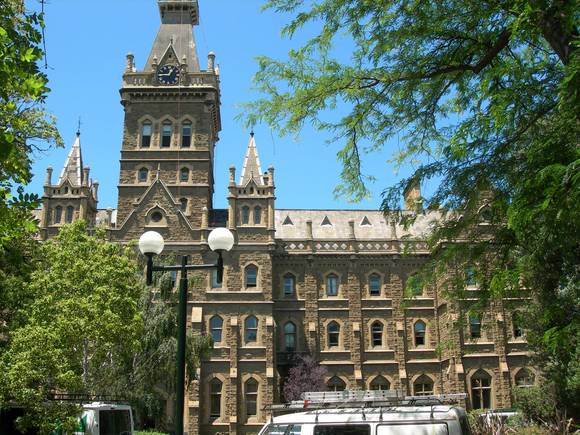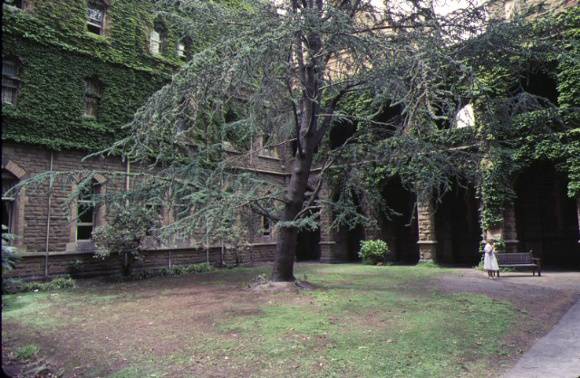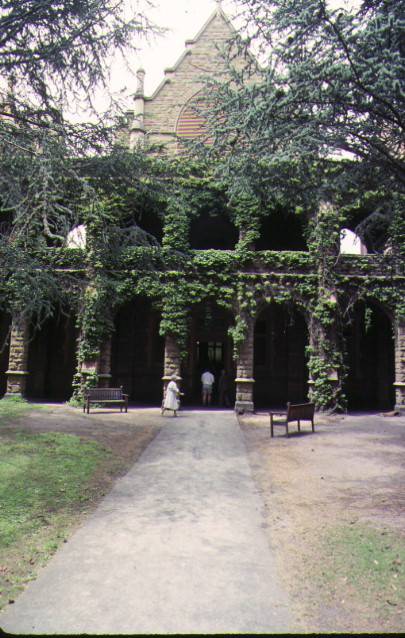| Back to search results » | Back to search page » |
|
ORMOND COLLEGE
LocationTHE UNIVERSITY OF MELBOURNE, 29 - 55 COLLEGE CRESCENT PARKVILLE, MELBOURNE CITY
File NumberFOL/15/56732LevelRegistered |
|
Statement of Significance
What is significant? Ormond College is located on a ten acre site in college crescent, Parkville. The college is named after its principal benefactor Francis Ormond (1812-1889). Ormond, a wealthy grazier, parliamentarian and philanthropist gave over 112,000 pounds (40,000 pounds during his lifetime) for the establishment and expansion of the college. A contract was let in October 1879 for the construction of the main from wing and tower to the design of the architects Reed and Barnes. The college opened its doors in March 1881 when the first scholars were admitted. Extensions to the original design followed. The south west wing was built in 1885 and the Victoria wing in 1888-9. The use of Ormond as a Presbyterian theological college was facilitated in 1887 by the construction of Wyselaskie Hall. J D Wyselaskie (1818-1883), pastoralist and owner of Narrapumelap in the western district, left 10,000 pounds to erect a residential hall, and a trust of £20,000 to pay the salaries of professors. All these buildings were designed by the architects Reed, Henderson and Smart, the firm founded by Joseph Reed. A master's lodge, located near the main entrance was designed by the same firm (now Reed, Smart and Tappin) in 1892, and the college was extended in 1893 with the erection of a large dining hall. A gymnasium, baths and laboratories (demolished) completed the nineteenth century complement of buildings at Ormond. All These buildings were executed it sandstone and cream brick and employed a consistent but eclectic vocabulary derived from the medieval architecture of England, Scotland and France sometimes described as high Victorian Gothic. The college buildings are completed by many ancillary features and a great deal of complementary furniture. Early twentieth century buildings which relate closely to the nineteenth century buildings include the cloisters and rear wing (1922) which enclose the Quadrangle and MacLean house (1929 erected as a residence for the third professor of theology. MacLean house, which is red brick, nevertheless retains Ormond's Gothic character. Later buildings reflect geometric shape planning and modernist influences. A cream brick master's residence with a square plan and a central pyramid roof was designed in 1958 by Roy Grounds. The 1958 design of the vice master's residence, also by Grounds, is attached to the master's lodge. Picken Court is a residential student wing designed by Frederick Romberg and built in 1961-62. It consists of three linked octagons which lie between the main wing and the master's lodge. To the east of the main wing is the library, also octagonal, designed by Romberg in 1961. Romberg also designed the eight storey octagonal residential tower McCaughey Court to the south east in 1965 before he left Melbourne to become professor of architecture at Newcastle university. The design was completed by Robin Boyd and executed in 1968. The extensive landscaped grounds were laid out in early in the history of the college, although much existing planting dates from the 1930's and is the work of the gardener Arthur Smith. Considerable modification and new plantings have been undertaken in the last decade. How is it significant? Ormond College is of architectural and social significance to the State of Victoria. Why is it significant? Ormond College is architecturally significant as a collection of collegiate buildings of exceptional quality designed by the most eminent Victorian architects of the nineteenth and twentieth centuries. Reed and Barnes, Reed Smart and Tappin, Frederick Romberg, Roy Grounds and Robin Boyd all contributed designs. The tower forms a notable landmark from both the University of Melbourne and the Melbourne Cemetery and dominates the row of colleges enclosing the university along Royal Parade, College Crescent and Swanston Street. Ormond College is socially significant for its association with major figures in Victoria's social, cultural and educational history. It continues as an important educational and religious institution associated with the University of Melbourne and the Uniting Church.
Group
Education
Category
Tertiary College







